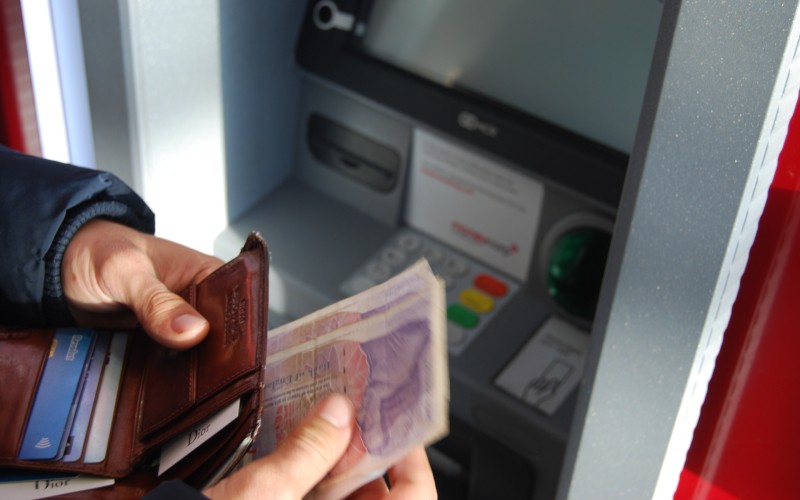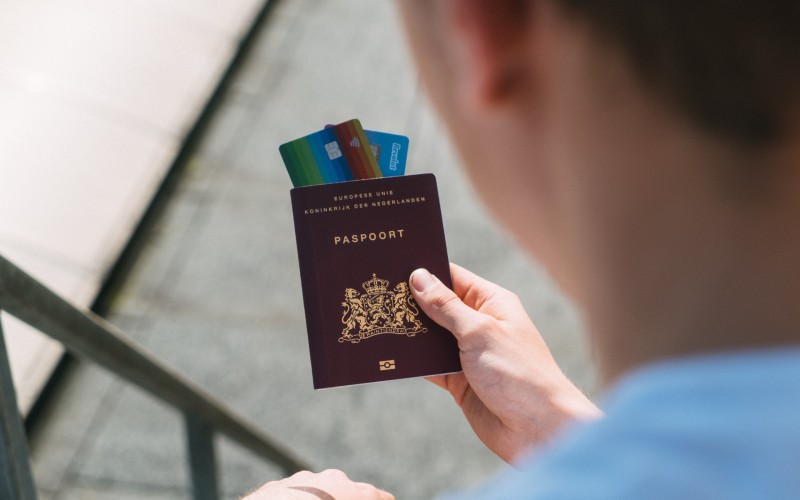Seasoned travelers know what to pack. We’ve invested in all kinds of products and gadgets to make our journeys more comfortable, convenient, and memorable, from mosquito repellent to voltage adapters to the best laptop for traveling. But one of the most essential accessories you can pack for pretty much any international trip doesn’t go in your suitcase. It slips into your wallet.
Traveling with a credit card offers you more flexibility and, arguably, greater safety while you’re on the road. And with all that you’re spending on international travel in the first place, it pays to take a few extra steps towards planning a picture-perfect getaway.
Cash Isn’t All It’s Cracked Up to Be

You’re going to reach into your pocket many times a day when you’re traveling. Carrying cash makes every time you do more risky. And even when you don’t, you run the risk of losing money to a pickpocket. No destination is immune to petty crime. It’s estimated that some 400,000 pockets are picked daily around the world.
Putting theft aside, paying with cash may still cost you more than using a credit card. You’ll pay fees whenever you exchange your home currency to the one favored by local cocktail waitresses and cabbies.
If you want to be frugal about it, you’ll need to get up to speed on the most favorable exchange rates available, then seek out currency exchange services that charge you a fair rate.
That can be inconvenient and even impossible in an emergency. If you’re crossing borders (travel tips point 13!) during the course of your journey, these costs—not to mention the hassles—can pile up quickly. Paying with plastic can sometimes be a better route to a more economical and enjoyable trip.
Credit Cards Come in Different Suits
Of course, you can use the same credit (and sometimes debit) card you use regularly at home to pay for everyday purchases while you’re traveling internationally. But many people turn to specially-designed travel credit cards instead.
The best travel credit cards don’t charge exchange or foreign transaction fees when you use them to pay foreign merchants directly or withdraw cash in the local currency. You’re always going to need a little cash on hand to tip a bellboy or shop at the local market.
These cards can make it less costly to withdraw just as much cash as you need on any given day. That’s one way to avoid returning home with foreign currency in your pocket. You know that mixed money salad made of rupees, shekels, yen, and euros you have stashed in bowl somewhere? The right credit card can keep it from proliferating.
While most general-purpose credit cards can help you buy what you need when you’re abroad, the best travel credit cards also offer benefits you’ll appreciate when you arrive home. It all depends on the perks travel credit card companies layer on to their offers and these vary widely among cards. Whether the perks represent a real benefit to you will also be influenced by how you use your card.

Oh, Those APRs!
Whether you’re shopping for the right mortgage or the ripest mangoes, chances are you take the time to look around for the best deals. If you apply the same diligence to your search for the best travel credit card—and of course, you should—you may be left puzzled by why any savvy traveler would choose to sign up for one.
The interest rates in this category of card run high when compared with traditional cards. Don’t be surprised to see interest rates as high as 25%.
The trick to getting the most out of any high-interest credit card is to never put more on the card than you can afford to pay off in one billing cycle.
With travel credit cards, the more you spend, the more rewards may be available to you. That can make using your travel credit card for large purchases like airfare and hotel charges a smart idea. But if you let your balance on a travel credit card languish, those perks are going to seem pretty paltry compared to the interest you pay.
So pay for large purchases with your card only if you have the cash reserves to maintain a low, or better yet, no balance on your card.
If you’ve decided that international travel is worth going into debt—and we know many people who do—an alternate finance strategy could serve you better. Traditional credit cards often offer 0% introductory rates that last as many as 18 months or more.
If you pay for your travel expenses using a travel credit card, you might follow that move by applying for one of those 0% cards. Then immediately transfer the balance to your new card. You can pay your travel debt off at a slower pace and save quite a bit of money.
You could also apply for a low-interest personal loan to cover your costs. But bear in mind that applying for too much credit too quickly can lower your credit score and cause financial institutions to decline your credit application.
If you have the time to space out your applications by a year or so, you’ll fare better. And that’s another good reason to plan ahead any time you plan a vacation.
Perks Can Be Perplexing
The good news is that travel credit card companies want your business. After all, it’s very lucrative for them, particularly if customers don’t use them carefully in the way we’ve described.
And travel credit card companies compete ardently to win your affection. Dangling a dizzying assortment of rewards is one way they try to differentiate themselves.
Some of their reward structures can be quite byzantine, though, and comparing the perk plans each company offers can be time-consuming. But compare you must, in order to get the deal that really makes sense for you.
First ask yourself what kind of rewards are most meaningful to you. Some rewards might not be as valuable in pure dollars and cents but might be something you still cherish.

We’re thinking of those nice airport lounges that allow you to relax between flights, for example. Some cards provide you with travel insurance that covers trip cancellation, trip delay, or even emergency evacuation when you use them to pay for travel expenses.
These benefits may be especially important for travelers whose health is uncertain or whose work obligations sometimes prevent them from departing when planned.
If you’re traveling to a disaster-prone destination, those benefits might also come in handy. On the other hand, some travel credit cards only reward you with miles you can use on your next trip. And many experienced travelers already have plenty of those stockpiled.
When you take a hard look at the restrictions that sometimes accompany reward programs, you might find them, well, too restrictive. Some cards require you to fly on specific airlines or stay in approved hotels.
That may prevent you from getting the most favorable airfare. And what if there isn’t a Marriott on the remote island you have your heart set on? Cards that carry brand restrictions don’t make the top of our list and travel experts don’t advise putting them on yours.
Even those cards that don’t limit you to certain brands may only count certain purchases categories when figuring your rewards. So be sure the things you actually want to pay for with your card qualify for rewards under the terms of your card agreement.
The Big Bonus Come-On
Introductory bonuses are often part of travel credit card companies’ competitive strategy. Some of these bonuses are paid in points and others in cash-back.
We suggest you do business with the company that puts money back in your pocket the fastest. Like other types of rewards, sometimes bonuses come with gotchas. Large minimum purchase requirements, sometimes within just a few months of getting your card, are among the ways travel credit card companies find a way around actually paying the bonuses they promise.
Annual Fees Aren’t All Bad

You may be accustomed to seeing credit card offers that promise no annual fees. Indeed, that’s one more way credit card companies try to attract and keep your business. But travel credit cards don’t often fall into this category. It’s pretty typical to see annual fees of $100 or more attached to travel credit card agreements.
You may not want to reject these cards out of hand, however. High-annual-fee cards sometimes come with immediate credits that offset their higher cost. These credits can be applied to baggage fees, Global Entry or TSA pre-check status, or in-flight purchases and bring the total cost of your trip down.
There’s Pleasure in Being Picky
From the destinations we choose to the comforts we may or may not demand to the very vehicles we use to move us from place to place, travel can be a very personal passion.
We travel to experience cultural diversity firsthand and to see the beauty of the world with our own eyes. And sometimes, we just want to relax and have fun. The right travel credit card can help you meet any of those goals.
canJust tread carefully, as you would along a cobblestone street when you choose—and use—your card and you can finance your dreams without creating a financial nightmare for yourself.
Author Bio
Susan Doktor is a journalist and business strategist who counts the time she has spent in far-flung places for double. She guest- and ghost-blogs internationally on a wide range of topics, including finance, technology, travel, food, and wine.
